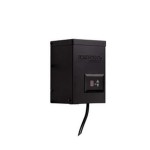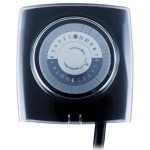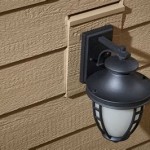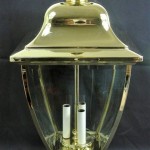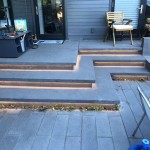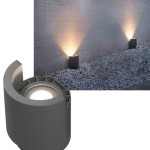How To Choose Outdoor Lighting For Your Home
Outdoor lighting is an essential aspect of home design, enhancing both aesthetics and safety. It extends the usability of your outdoor spaces, creates a welcoming ambiance, and deters unwanted activity. With numerous lighting options available, choosing the right ones for your home can be overwhelming. This article will guide you through the process of selecting outdoor lighting that complements your home's design and meets your functional needs.
Determine Your Lighting Needs
Before diving into the specifics of lighting types, it's essential to assess your outdoor lighting needs. Consider the purpose of each area you want to illuminate. Are you aiming to create a relaxing atmosphere for evening gatherings on your patio, illuminate pathways for safe navigation, highlight architectural features, or deter potential intruders?
For example, if your goal is pathway illumination, you may need a series of low-voltage path lights or solar-powered lights that provide ample brightness without creating glare. Conversely, if you wish to highlight a specific architectural feature like a front door or a cascading waterfall, you might consider a high-intensity spotlight or wall-mounted fixture with a directional beam.
Understand Different Lighting Types
Outdoor lighting encompasses a wide range of styles, each serving a specific function. Here are the most common types of outdoor lighting:
1. Ambient Lighting
Ambient lighting provides overall illumination for a space, creating a general sense of brightness. It's typically used for larger areas like yards, gardens, and patios. Examples include floodlights, string lights, and deck lights.
2. Task Lighting
Task lighting aims to illuminate specific areas for specific purposes. This could include a porch light for reading, a security light for motion detection, or a grill light for cooking.
3. Accent Lighting
Accent lighting is designed to highlight particular features of your landscape or home's architecture. It can be used to emphasize trees, statues, fountains, or even just a unique architectural element.
Choose the Right Fixtures
Once you've determined your lighting needs, it's time to select the appropriate fixtures. Here are some key factors to consider:
1. Material
Outdoor lighting fixtures are typically made from durable materials like metal, plastic, or glass. Metal fixtures, such as those made from aluminum or cast iron, are generally more resistant to rust and corrosion. Plastic fixtures offer affordability, but their durability may be limited. Glass fixtures, while elegant, require more maintenance and are susceptible to breakage.
2. Style
Outdoor lighting fixtures are available in a wide range of styles, from modern and minimalist to traditional and rustic. Choose a style that complements your home's architecture and your overall landscape design.
3. Size and Shape
The size and shape of your fixtures will influence the amount of light they produce and the overall aesthetic appeal. Consider the scale of your home and landscaping when selecting fixture sizes.
4. Light Source
Outdoor lighting fixtures use various light sources, each offering unique benefits. Incandescent bulbs are traditional and affordable but consume significant energy. Halogen bulbs provide brighter light and last longer than incandescent bulbs. LED bulbs are becoming increasingly popular due to their energy efficiency, long lifespan, and versatility.
5. Light Color
The color temperature of your light source, measured in Kelvins (K), will impact the overall ambiance of your outdoor spaces. Warm white (2700-3000K) creates a cozy and inviting atmosphere, while cool white (4000-4500K) offers a more energizing and modern feel.
Consider Additional Features
Some outdoor lighting fixtures have features that enhance their functionality and convenience. These include:
1. Motion Sensors
Motion sensors activate lights when they detect movement, providing security and energy savings. They are particularly useful for pathways, entryways, and backyards.
2. Dimmers
Dimmers allow you to adjust the brightness of your lights, creating different moods and reducing energy consumption.
3. Smart Bulbs
Smart bulbs connect to your home’s Wi-Fi network, allowing you to control them remotely using a smartphone or tablet. They offer features like customizable color settings, timers, and integration with other smart home devices.
Choosing the right outdoor lighting for your home involves careful consideration of your lighting needs, fixture types, and additional features. By following these guidelines, you can create an outdoor space that's both functional and aesthetically pleasing.

How To Choose Exterior House Lighting E Green Electrical

How To Choose Outdoor Lighting

Choose Outdoor Lighting Fixtures American Gas Lamp Works

Things To Consider When Choosing Outdoor Lighting Hevi Lite Inc

How To Choose A Landscape Lighting Design That Fits Your Home

Outdoor Lighting Guide Delmarfans Com

How To Choose The Best Outdoor Lights Cave Electrical And Solar

How To Choose The Best Outdoor Lights Service Com Au

Considerations For Choosing Outdoor Lighting Creative Nightscapes

How To Create The Perfect Ambience With Outdoor Lighting
Related Posts
